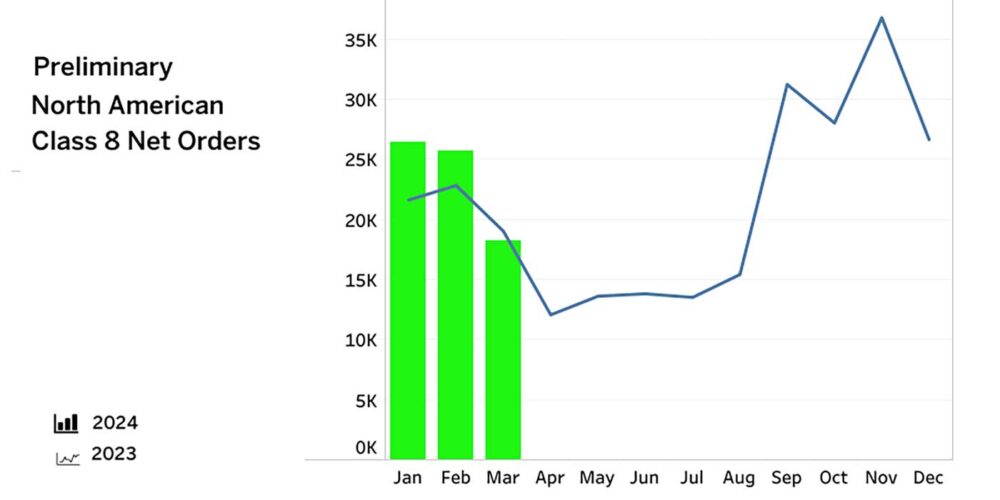One of the most important analyses that every commercial trucking fleet should be performing on an annual basis is a meaningful tire survey on trucks and trailers.
Here’s what to look for: What tires are running well? What tires are generating the highest treadwear and lowest amount of irregular wear? Are valve caps missing? What are the tire pressures—and are those pressures too high or too low? Are the retreads running as well as the new tires?
Also, when was the last time you reviewed your retreadability report from your local retreader? What about your scrap tire pile—are there any conclusions you can draw from inspecting those scrap tires? These are the types of questions that need to be addressed in order to optimize a tire program and reduce tire cost per mile.
The key parameters to record during this annual tire survey are: tire make, model, size, DOT number, wheel position, tread depth, wear condition, valve cap, odometer reading and air pressure. If the tire is a retread, you need to record the specific casing manufacturer and retread design. These parameters will allow you to make an analysis of the current tire program for tires running on your vehicles. In addition, the second part of the survey would be to analyze the scrap tire pile. Based on the results of tires running and those that have been scrapped, you can use this data to fully understand what is working well and what needs improvement in your fleet’s tire program.
Let’s take a look at some details. Most fleets have more than one specific tire design running on a given wheel position, be it steer, drive, or trail. By recording the make and model, the tread depth data will allow you to determine which tire model is giving the highest or best miles per 32-in. for a specific wheel position. This calculation is made first by taking the new tire tread depth and subtracting the measured tread depth to determine how many 32nds of rubber have been used. The tough part is to determine exactly how many miles are really on the tire. This requires fleets to go back through their records to figure out the vehicle odometer reading when the tires were mounted. Once you know the actual tire miles, then the miles per 32nd. is simply total miles divided by the amount of tread used in the previous calculation. You may find out that “Tire A” is giving the best treadwear on the steers, and maybe “Tire C” is performing best on the drive axles. But you won’t know until you make the calculations.
Actual tire cost per mile is another calculation one can make when the tire is physically removed from service. When it comes to retreads, even though the initial or starting tread depth is typically lower than the new tire, the miles per 32nd result should be comparable.
When it comes to tire wear conditions, the goal is even wear. If the survey data shows irregular wear conditions such as fast shoulder wear, cupping, depressed wear, or alignment-related wear, you will need to do further analysis and determine if the wear is related to vehicle mechanical, tire alignment, or low tire pressure issues. By recording missing tire valve caps, you can determine if the low tire pressures are the result of those missing caps or if they are related to slow-leaking punctures. Since the specific tire wheel position also was recorded, one can analyze if there is a correlation between wheel position and such things as tire pressure and irregular wear conditions. Quite often, but not surprisingly, you may discover the tires with the most irregular wear are inside dual trailer tires that also have low tire pressure. Inside duals, regardless of drives or trailers, tend to have lower tire pressure because it takes more time and effort to measure pressure on those wheel positions.
A good scrap tire pile analysis can reveal a lot about your current tire program. If your tire program calls for retreading every virgin casing one time, then the ultimate goal is to find that 100% of the tires in the scrap tire pile have been retreaded one time and they are worn down to the legal limit and have no signs of irregular tire wear. If, for example, you find retreads that are half worn in the pile, ask why they came out of service early. Was there a tire casing issue with a specific make and model? Were the tires being run overloaded and underinflated? These situations need to be investigated.
As tire prices continue to rise due to the increased cost of raw materials needed to for their manufacture, it becomes even more important to develop and maintain a comprehensive tire program to minimize tire cost/mile and keep the total tire budget in check.













